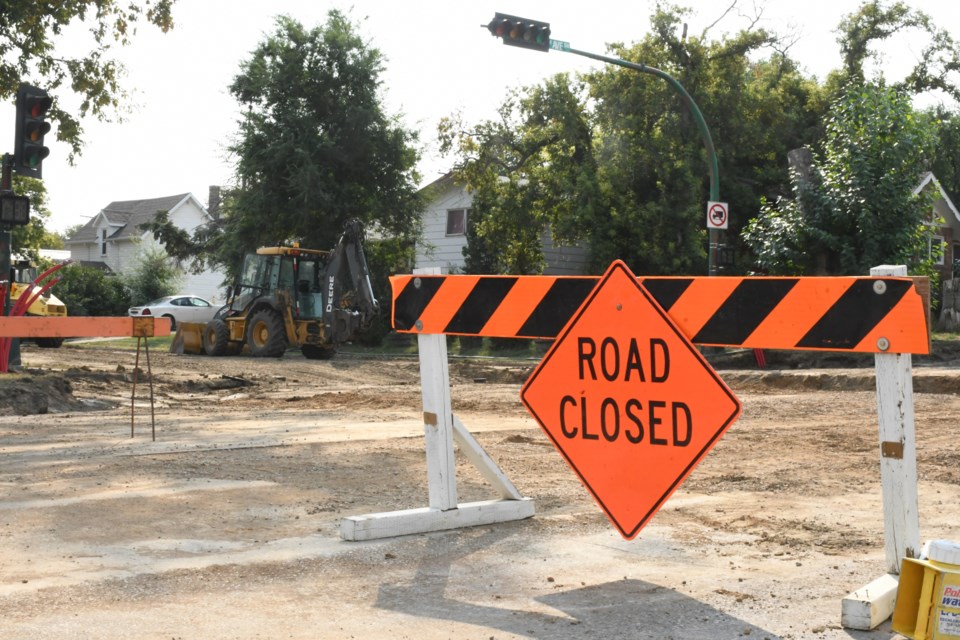MOOSE JAW — Canadian municipalities receive less than 10 cents from every dollar that taxpayers contribute, which is insufficient to address a growing backlog of major capital expenses, city hall says.
Finance director Brian Acker presented a chart during the recent 2025 budget meeting that showed the tax distribution in Canada and how much money goes to the municipality, the province, and Ottawa, using data from the Federation of Canadian Municipalities.
He used this chart to discuss the capital (infrastructure projects) budget, which is facing a $59.2 million shortfall over the next five years.
The chart showed that for every $1 of taxation, municipalities receive eight cents (eight per cent), provinces receive 42 cents (42 per cent) and Ottawa receives 50 cents (50 per cent).
“That’s all good and fine, but the reality is … 60 to 70 per cent of infrastructure in Canada is the responsibility for municipalities, yet we only get eight cents of the dollar to rehabilitate them,” Acker said.
“That’s not enough. It hasn’t been enough for years and it certainly isn’t enough going into the future,” he continued. “Something that municipalities need to do is lobby to get that additional funding, and it needs to be significant.”
Acker pointed to two significant infrastructure issues that happened last year, specifically, the collapse of major water mains in Calgary and Montreal that forced water rationing in the west and a major flood in the east. He added that municipalities will face further pressure to address crumbling infrastructure if more funding does not become available.
Capital budget
Over the next five years, city hall will have more capital expenses than revenue to fund them by a margin of two to one, while many municipal venues and infrastructure items are growing older and require more money to maintain, said Acker.
The total capital funding available in 2025 is $10.1 million, which is $3.6 million less than required, and $62.9 million is available during the next half-decade while there is a funding shortfall of $57,257,161, the budget report showed.
Acker reviewed some of the capital budget’s revenue categories, pointing out that land sale proceeds have zero income — the target last year was $1 million — because there have been no sales in the agri-food industrial park as expected.
Administration has $3.3 million worth of land development projects planned over the next five years, including phases 5 and 6 of the Westheath subdivision, city property clean-up, in-fill development and downtown parking.
Acker thought the municipality required “foresight” about where it wanted development to occur and whether it should be involved in residential and commercial development.
“Based on those decisions, we can move forward with a plan of how land sales can help fund the capital budget,” he added.
The transportation category has $54.5 million in proposed spending over the next five years, with $25.2 million earmarked for structure upgrades like bridges — including the Thunderbird Viaduct, the report showed.
Acker said the city won’t receive as much money from Canadian Pacific Kansas City (CPKC) as expected to rehabilitate that bridge, so city administration will present a report about how to handle this situation.
Meanwhile, city hall has $6.1 million in planned capital projects for storm sewers over the next half-decade, while roughly $210 million of such infrastructure renewal is required.
Acker noted that this infrastructure is in “dire straits” since it’s underground, has been neglected for years and requires significant money to repair. He added that these repair costs will increase in the future.
Transit
City hall will provide the transit (regular and para) department with a subsidy of $1,869,999 this year, which represents 74 per cent of all costs, the report said. In comparison, in 2019, the subsidy was $1,230,715 and represented 65 per cent of costs.
Bus maintenance costs continue to increase and are higher than regular inflation levels, but one way to address this is to purchase new buses, said Acker.
Furthermore, “a significant subsidy” is required because previous city councils realized Moose Jaw is too small not to have bus service but not big enough for the service to be sufficient, he continued. However, Ottawa will start providing capital funding of $212,168 annually in 2026 to help with fleet renewal, so less municipal funding will be required.




